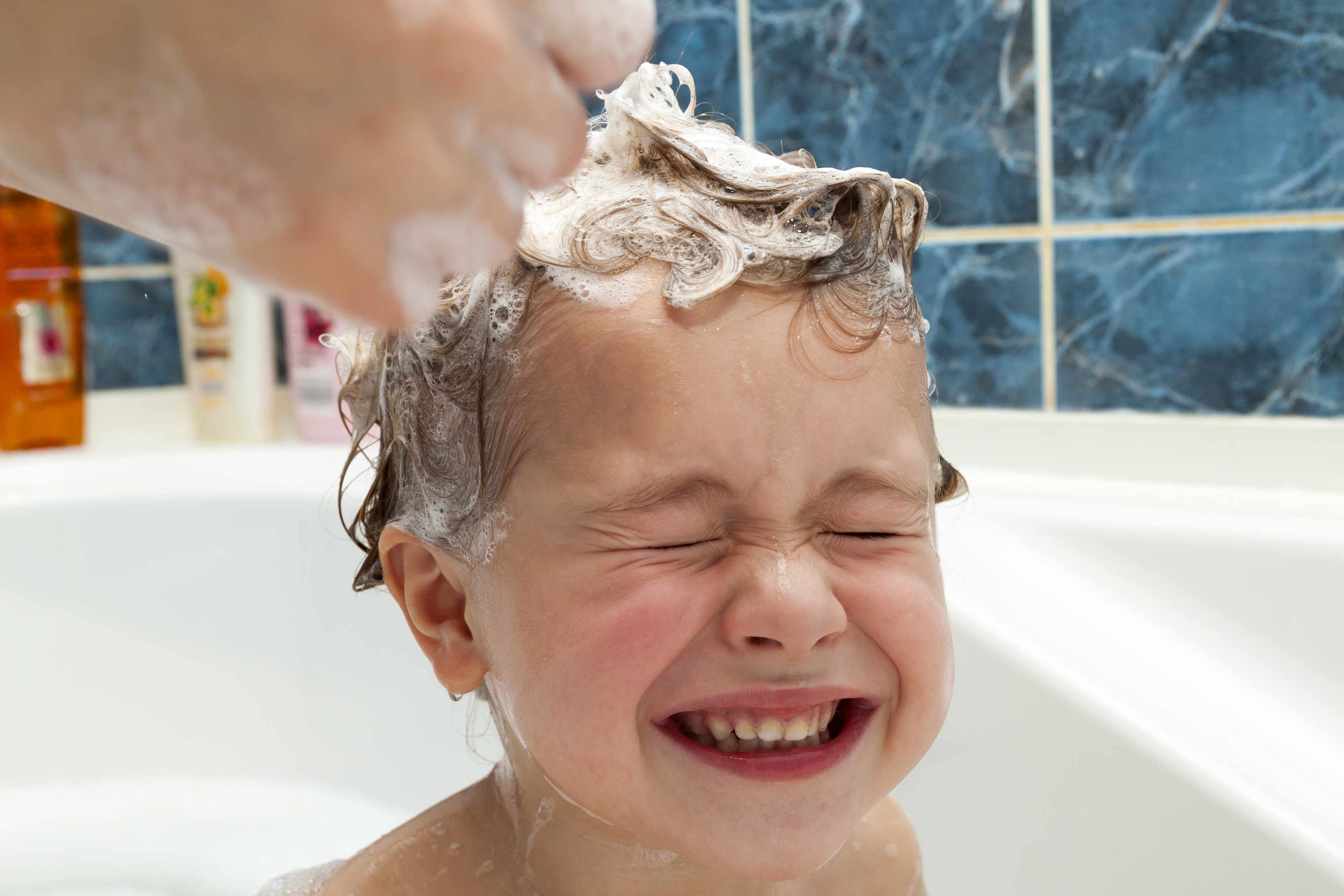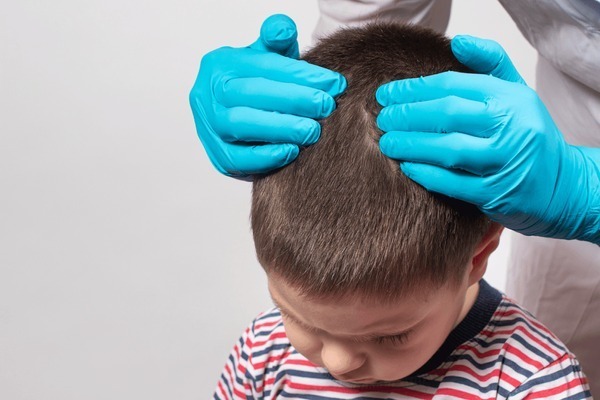Discovering unexpected bumps on your child’s scalp can be alarming. These small lesions may seem minor but can leave you wondering whether they’re a harmless reaction or the sign of something more serious. If your pediatrician appointment is still days away, it’s important to know how to care for your child in the meantime.
This article offers factual, evidence-based insights into common causes of scalp bumps in children, effective home care measures, and clear signs that require medical attention.
Understanding the Child’s Scalp and Why Bumps Appear
Children’s scalps are more sensitive and reactive due to higher follicular density, increased sweat gland activity, and more frequent exposure to bacteria and allergens. These conditions make the pediatric scalp particularly vulnerable to inflammation, irritation, and infections.

Common Causes of Scalp Bumps in Children
1. Folliculitis
This is an infection or inflammation of hair follicles. In kids, it often develops due to sweating, friction from hats, or sharing hair accessories. It appears as small, red or white bumps, sometimes filled with pus.
2. Sebaceous (Epidermoid) Cysts
These are slow-growing, noncancerous lumps beneath the skin caused by blocked hair follicles or oil glands. While usually painless, they can become infected.
3. Boils (Furuncles)
Boils are deeper bacterial infections that form pus-filled, painful nodules. They typically result from Staphylococcus aureus bacteria and may require antibiotics or drainage.
4. Contact Dermatitis
This occurs when the scalp reacts to a substance like shampoo, soap, or even sweat. It presents as red, itchy, bumpy skin, sometimes with flaking or weeping.
5. Insect Bites
Bug bites—especially from mosquitoes or fleas—can cause red, itchy bumps on the scalp. These can become infected if scratched.

Recognizing the Signs of Each Condition
Folliculitis:
- Red pimples or white-headed pustules
- Itching or mild discomfort
- Common in kids who sweat a lot or wear tight hats
Cysts:
- Round, movable lump under the skin
- Usually painless unless infected
- May slowly increase in size over weeks or months
Boils:
- Painful, red bump with a white or yellow center
- May grow rapidly and be warm to the touch
- Often accompanied by fever or fatigue if severe
Contact Dermatitis:
- Red patches, sometimes blistered or cracked
- Itchiness after using a new hair product
- No fever or pus unless secondarily infected
Insect Bites:
- Isolated bumps, often itchy
- May develop crusting if scratched repeatedly
- Occasionally show small puncture marks in the center
When to Seek Immediate Medical Attention
Although many scalp bumps in children resolve on their own or with simple care, you should contact a doctor urgently if you notice:
- Fever above 101°F (38.3°C)
- Rapid spreading of redness or swelling
- Pus discharge with a foul odor
- Pain that interferes with sleep or daily activities
- Red streaks leading away from the bump (a sign of cellulitis)
- Swollen lymph nodes behind the ears or in the neck
- Neurological symptoms (e.g., stiff neck, severe headache, drowsiness)
These symptoms may indicate deeper infection or complications that require antibiotics or surgical drainage.

At-Home Care Measures While Waiting for Medical Advice
1. Warm Compresses
Apply a clean, warm washcloth to the bump for 10–15 minutes, 3–4 times daily. This can encourage natural drainage and reduce discomfort, especially in cases of folliculitis or early boils.
2. Gentle Cleansing
Use mild, fragrance-free baby shampoo. Avoid scrubbing the area. Rinse thoroughly to prevent buildup of products, which can aggravate the scalp.
3. Topical Antiseptics (Use with Caution)
- Chlorhexidine gluconate (diluted appropriately) is generally safe for external use.
- Tea tree oil, diluted with a carrier oil like coconut oil, may have antibacterial effects. Always do a patch test first.
- Avoid harsh antiseptics or adult acne medications unless directed by a healthcare professional.
4. Avoid Irritants
Refrain from using new shampoos, sprays, or gels that could trigger contact dermatitis. Check ingredient labels and opt for hypoallergenic products designed for children.

Preventing Future Scalp Problems in Children
Hygiene and Lifestyle Tips:
- Wash hair regularly, especially after sweating or outdoor play
- Ensure proper rinsing of all shampoo or conditioner
- Dry the scalp gently without vigorous rubbing
- Avoid sharing hats, combs, or hair accessories
Clothing and Activity Tips:
- Choose breathable headgear during sports or hot weather
- Encourage showering soon after physical activity
- Launder hats and pillowcases frequently
Diet and Immune Health:
- Provide a balanced diet with sufficient vitamin C (for skin repair) and zinc (for immune function)
- Encourage good sleep hygiene
- Teach your child not to scratch or pick at bumps
What to Expect from a Doctor’s Visit
Depending on the diagnosis, a pediatrician or dermatologist may recommend:
- Antibiotic ointments or oral antibiotics (for bacterial infections)
- Antifungal shampoos or medications (for fungal conditions like tinea capitis)
- Steroid creams or lotions (for allergic or inflammatory reactions)
- Drainage procedures (for large boils or cysts)
- Biopsy (rare, in persistent or unusual cases)
Always follow your doctor’s instructions fully, and do not use prescription medications from previous treatments unless advised.

Recovery Timeline and When to Re-Evaluate
Each condition has a general timeline for improvement:
- Folliculitis: 3–7 days with proper care
- Cysts: May persist unless surgically removed
- Boils: 7–14 days, possibly faster with antibiotics or drainage
- Contact dermatitis: 1–3 days after removing the allergen
Seek further help if:
- The bump enlarges or becomes more painful
- No improvement is seen after 3 days of home care
- Additional symptoms like fever, fatigue, or multiple new bumps develop
Final Thoughts: Staying Calm and Proactive
Scalp bumps in children are usually treatable and non-serious, but they should never be ignored—especially if signs of infection or pain are present. By applying proper at-home care, recognizing red flags, and preparing for a medical visit, you can help ensure your child receives appropriate treatment without delay.
Always prioritize your child’s safety and consult a healthcare provider for personalized advice.
Sources
- American Academy of Dermatology Association – Scalp conditions in children
- Mayo Clinic – Folliculitis
- Centers for Disease Control and Prevention – MRSA and Boils
- Cleveland Clinic – Sebaceous Cysts
- DermNet NZ – Contact Dermatitis
- National Institutes of Health – Pediatric Skin Conditions
